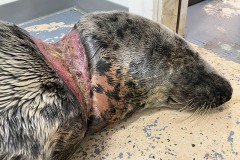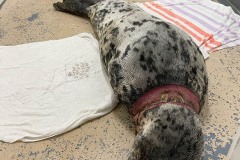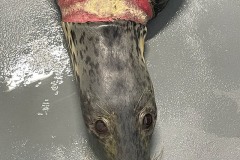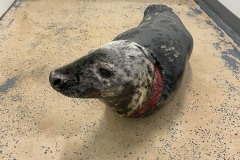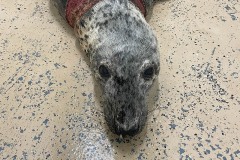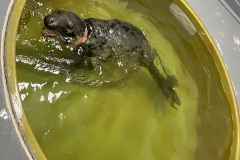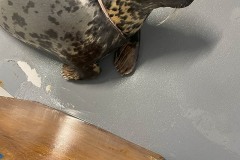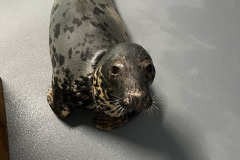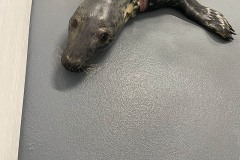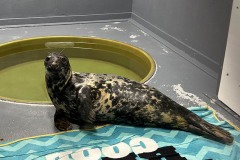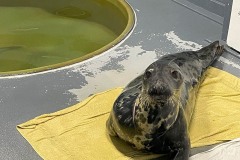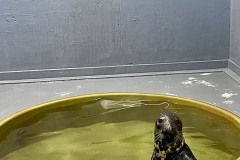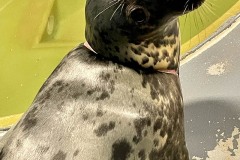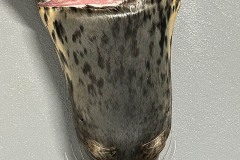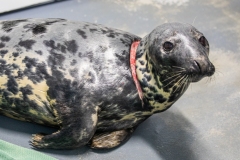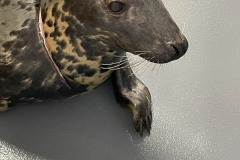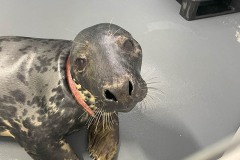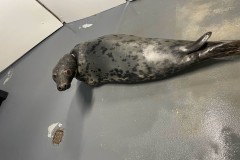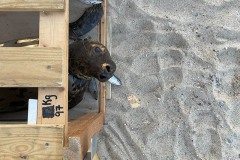Saving Salty
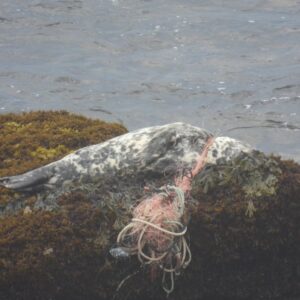
On June 15th we admitted one of our most critical patients in NMLC history – Salted Caramel, otherwise known as “Salty.” Salty was initially rescued by our colleagues at the Seacoast Science Center after stranding on White Island, the most southerly island of the Isle of Shoals.
Salty was severely entangled in 3kg (6.6 lbs) of monofilament, netting, rope, and floats. The gear was wrapped all the way around her neck, causing a laceration that extended 360 degrees around. The worst of her laceration was present on the dorsal neck, severely cutting into both the blubber and muscle layers. To make matters worse, the gear was caught on a rock anchoring her in place on the island giving her just enough leeway to keep her head about water at high tide. It was highly likely that the line cut in deeper as she desperately tried to free herself. Salty was also dehydrated and in poor body condition, likely caused by the entanglement negatively impacting her ability to forage. She also arrived with a mild parasite burden.
After careful wound care and treatment, Salty’s wound made extraordinary progress! Her cervical spine vertebra was no longer exposed, healthy pink new tissue had formed, and the wound started shrinking in size. Her energy and mobility levels had reached normal levels, and she was showing the Animal Care Team that trademark grey seal attitude.
Salty’s recovery was extraordinary, but it is important to note that her wound will never fully heal. Given the extent of the neck laceration caused by the fishing gear entanglement, and the specifics of seal blubber and epidermal blood supply, a complete wound resolution was not expected. Her wound will always be noticeable due to the visible epidermal defect. Having got her through the most critical phase and past the risk of infection, Salted Caramel was released back into the wild on July 16th to continue healing in her natural environment.
Here is a gallery of photos of Salted Caramel. PLEASE NOTE: Some of the images are graphic, and hard to look at.


